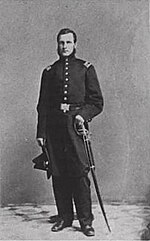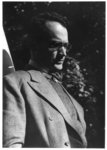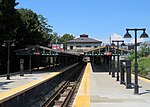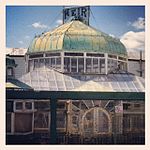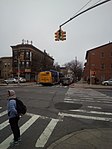Green-Wood Cemetery

Green-Wood Cemetery is a 478-acre (193 ha) cemetery in the western portion of Brooklyn, New York City. The cemetery is located between South Slope/Greenwood Heights, Park Slope, Windsor Terrace, Borough Park, Kensington, and Sunset Park, and lies several blocks southwest of Prospect Park. Its boundaries include, among other streets, 20th Street to the northeast, Fifth Avenue to the northwest, 36th and 37th Streets to the southwest, Fort Hamilton Parkway to the south, and McDonald Avenue to the east. Green-Wood Cemetery was founded in 1838 as a rural cemetery, in a time of rapid urbanization when churchyards in New York City were becoming overcrowded. Described as "Brooklyn's first public park by default long before Prospect Park was created", Green-Wood Cemetery was so popular that it inspired a competition to design Central Park in Manhattan, as well as Prospect Park nearby. The cemetery was listed on the National Register of Historic Places in 1997 and was made a National Historic Landmark in 2006. In addition, the 25th Street gates, the Weir Greenhouse, and the Fort Hamilton Parkway Gate & Green-Wood Cemetery Chapel were separately designated as city landmarks by the New York City Landmarks Preservation Commission at various times.
Excerpt from the Wikipedia article Green-Wood Cemetery (License: CC BY-SA 3.0, Authors, Images).Green-Wood Cemetery
Forest Avenue, New York Brooklyn
Geographical coordinates (GPS) Address Nearby Places Show on map
Geographical coordinates (GPS)
| Latitude | Longitude |
|---|---|
| N 40.6525 ° | E -73.991111111111 ° |
Address
Forest Avenue
Forest Avenue
11232 New York, Brooklyn
New York, United States
Open on Google Maps

